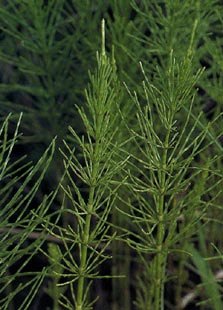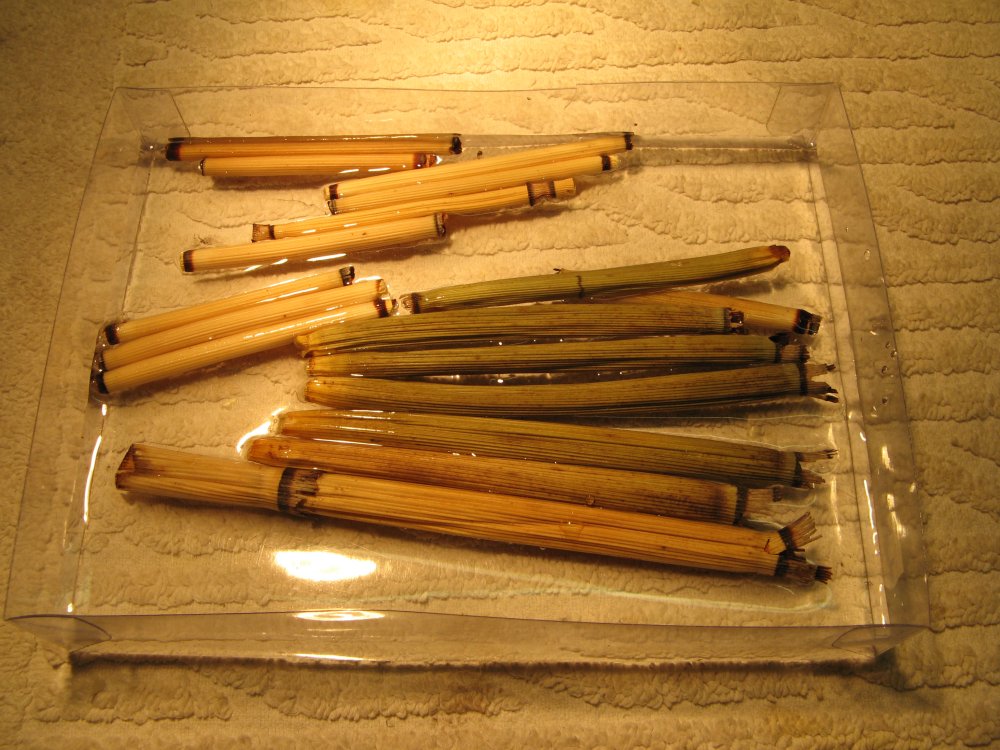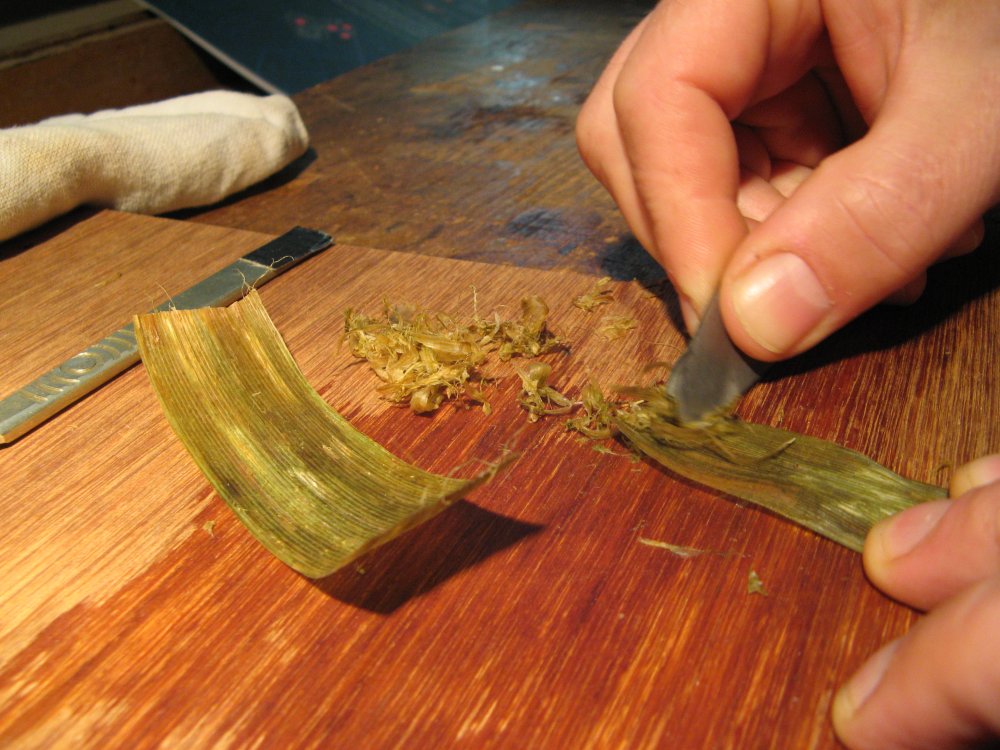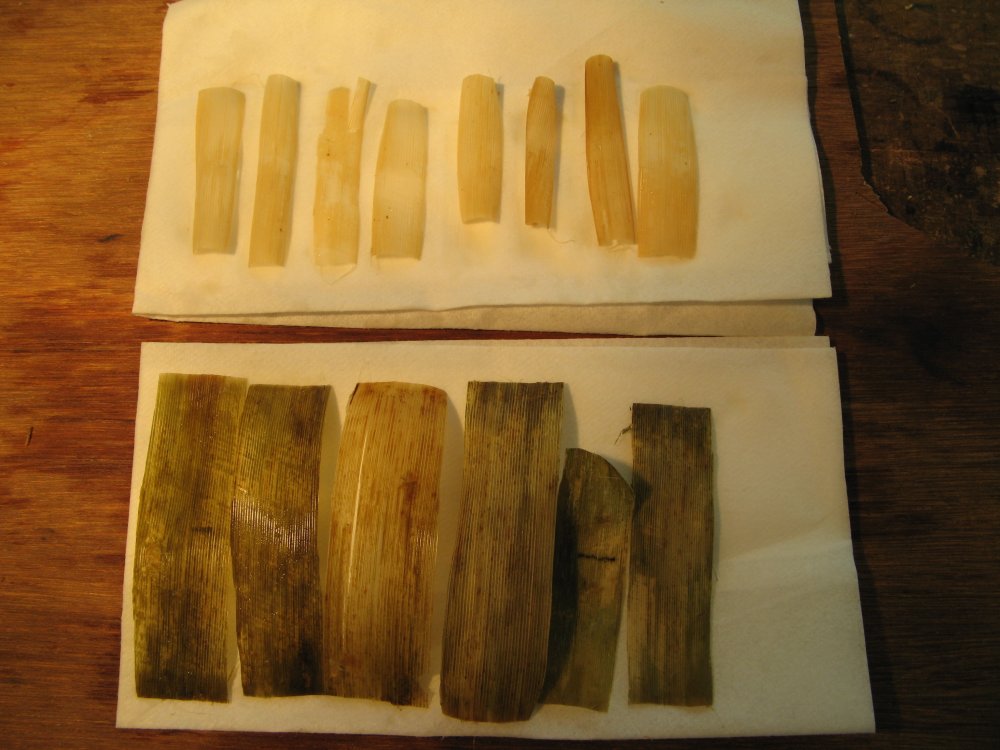Occasional I am asked about an article I had written some years ago for the BVMA newsletter issue 50 (2007)
Recently Steve Thomas from California prompted me to look through my harddrive...and here it is - I think more or less as it was published.
As with most ideas, working techniques etc.
this was my approach at the time, others might work with horsetail differently, but everyone fine-tunes their material and tool use to their own needs. These days I use horsetail much less, occasionally to soften a very sharp edge, but I rely on a sharp scraper much more to create a surface on which I build up my varnish ground. As stated at the end - Any surface finish on the white wood should already be an integral part of the varnishing process. This I believe to be just as important today.
Steffen Nowak, Bristol, January 2020
Technical workshop: The use of equisetum arvense, the common horsetail
My first encounter with horsetail was way back at the Welsh School of Violin Making (WSVM) in 1983/84 during our weekly sessions with Harp maker Alan Shires teaching us tool making. Being a novice to woodturning I struggled to get a nice finish to some turned handles and someone suggested the use of horsetail, commonly known as shaving grass.
Horsetail is a plant member of the Equistum family. It’s been around for about 30 million years and there are about 30 species in existence - Equisetum arvense is ourField or Common Horsetail. It is generally considered a weed or even pest when in gardens – can grow as tall as 150cm with hollow stems up to 1cm thick and whorls of many simple green branches at its nodules. It’s possible to find it in the country, on river banks, railway lines or along paths. The plants outer surface has got small protuberances with accumulated silicic acid making it a useful abrasive. An easy test if the plant you find on your weekend walk is abrasive enough is to tear off a stem and rub it over your fingernail.
Image 1. 
I next came across the plant during the 1987 Strad exhibition in Cremona, strolling along the river Po and there it was – thick high stalks growing in abundance waiting to be picked. I put them in the boot of my car and once back in the UK it was nice and dry – only I didn’t quite know if it was to be of any use in respect of my violin making.
I have actually never found a really ‘sharp’ horsetail growing in the UK, but have been successful in South Germany, Italy and Spain. I also bought a nice bunch once at a London flower shop (imported from Holland) and Kremer also supplies it ready cut in stems. Once you have a cutting horsetail the stems should have as large a diameter as possible as they shrink when dry and the following preparation might be too difficult.
Initially I used the cut segments – split open and with light pressure motion over the finished wood wherever I thought it needed ‘rubbing down’.
Frustration set in quickly though as it would split and crumble all too readily, some off its hard edges would catch the grain and leave light scratch marks (just the opposite of what I was trying to achieve). As so many initially right sounding ideas one tries them a few times – if they lead somewhere there is often still some scope for improvement – or they prove unworkable and are put into the ‘tried it – doesn’t work’ corner.
I must admit – I don’t know anymore when I hit on the idea with the masking tape, but it must have been before I wasted and broken all my Cremonese horsetail.
The idea is simple – just back the horsetail segments with masking tape – easy!
A few steps to guide you through the process will make it even easier:
Rub off any side stems if still present.
Break/ cut the dried plant stalk apart at the nodules.
Soak in water till soft – as they will float put a couple of pieces of wood on top.
Image 2. 
Now cut off the hard nodules at the end of each segment.
Image 3. 
With a scalpel blade slice open each segment lengthwise.
Using a curved scraper scrape out the inner translucent membrane.
Image 4. 
Depending on how many segments you are preparing, to prevent the scraped ones from drying out too much and curling up you might want to put them back into water.
Now dry all the rectangular pieces on several layers of kitchen paper, pressed down gently with some suitable pieces of wood.
If you are doing a lot of pieces dry them in smaller batches – due to their tendency to curl up you need a lot of hands (or just be very fast!).
You might need to replace the paper layers once to get them really dry.
Image 5.  .
.
Once dry use a strong wide masking tape (or experiment with other tape varieties) and put each flat horsetail segment on the sticky tape side and press down gently.
If the segments are cut dead straight along its side you can join them up and even make a larger piece if needed (even a horsetail wallpaper would be a possibility for those with some spare time on their hands).
The pieces can now be trimmed to size with scissors – I keep them uncut and only trim them down if I need a smaller piece for a particular area.
I have used them as a gentle abrasive on both spruce and maple. I tend to use it more one directional with light pressure rather then going in circles. The light abrasion possible with horsetail appears to have more of a cutting then tearing action on the wood fibres. If used more aggressively it will give a more pronounced appearance to the medullary rays of spruce. Once the piece becomes clogged up with dust this can be easily brushed out with an old toothbrush and reused till it loses its bite or breaks up. Generally, use it lightly rather than forcing it.
Where and when to use horsetail (if at all) is a matter of each makers individual approach. Any surface finish on the white wood should already be an integral part of the varnishing process. What you do to the wood surface will have a major impact on how the wood will react to any possible ground sealer, the subsequent varnish coats and of course its optical appearance.
Some more information:
http://en.wikipedia.org/wiki/Equisetum




 .
.